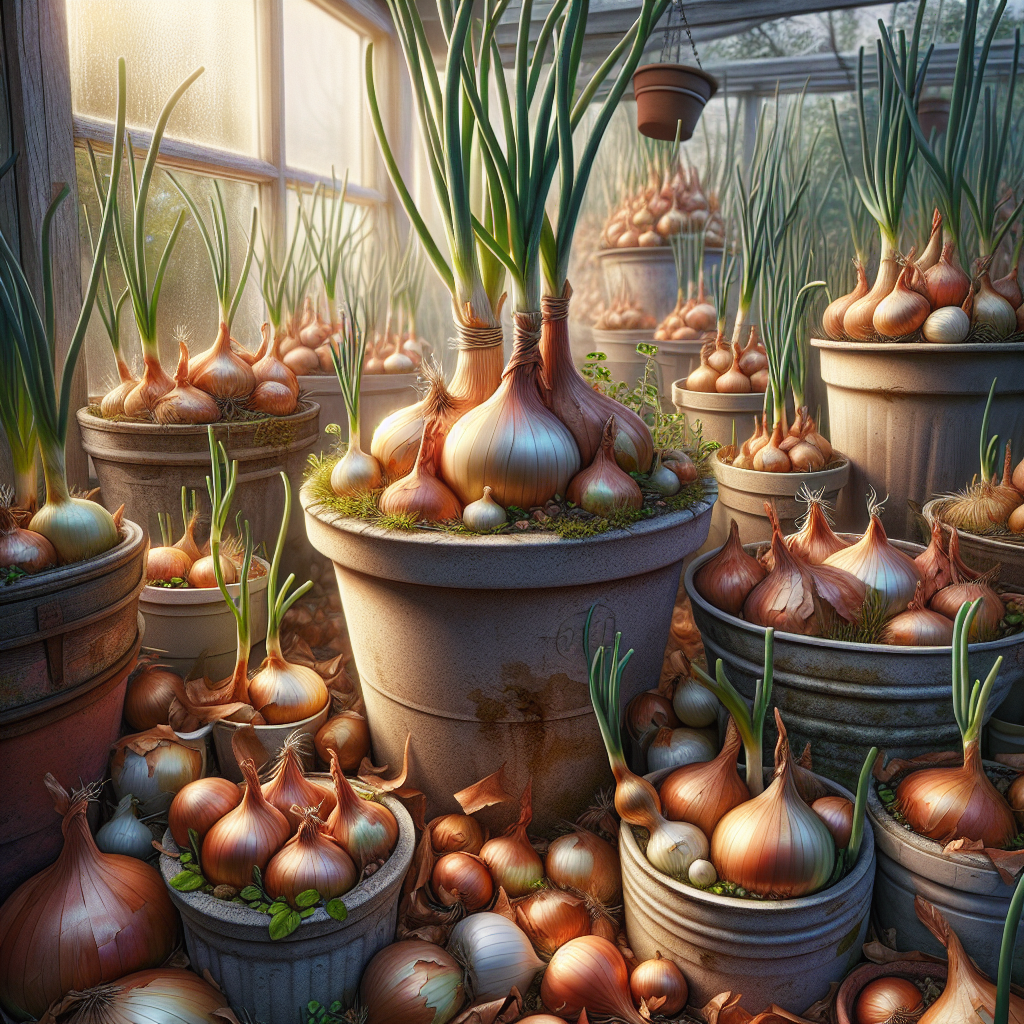Container gardening is a popular and convenient way to grow plants, particularly for those who may not have access to a traditional garden space. One plant that thrives in containers and is relatively easy to grow is the humble onion. Onions are a staple ingredient in many dishes and can be used in a variety of ways, making them an excellent addition to any container garden.
Before getting started with container gardening with onions, it’s essential to understand the basics of growing this versatile vegetable. Onions are typically grown from sets, which are small bulbs that have been started from seed and then dried for planting. They can also be grown from seeds or transplants, but sets are generally the easiest option for beginners.
Choosing the right container is crucial when growing onions in pots. Onions have shallow roots, so a wide and shallow container works best. A plastic or ceramic pot with drainage holes at the bottom will ensure that excess water can drain out, preventing root rot. A 5-gallon container is typically large enough to grow several onions at once.
When it comes to soil, onions prefer well-draining, loose soil that is rich in organic matter. A mix of potting soil and compost works well for container-grown onions. Ensure that the soil is loose enough for the onions’ roots to penetrate easily and receive adequate airflow.
Onions require plenty of sunlight to thrive, so choose a sunny location for your container garden. Place your pots in an area that receives at least six hours of sunlight per day. If you don’t have access to direct sunlight, consider using grow lights to supplement natural light.
Watering is another crucial aspect of growing onions in containers. Onions prefer consistently moist soil but can be susceptible to rot if overwatered. Water your plants when the top inch of soil feels dry to the touch, taking care not to let the soil become waterlogged.
Fertilizing your container-grown onions will help them thrive and produce healthy bulbs. Use a balanced fertilizer high in nitrogen every two weeks during the growing season. Be sure to follow the manufacturer’s instructions regarding application rates and frequency.
One benefit of growing onions in containers is that they are less susceptible to pests and diseases than those grown in traditional gardens. However, keep an eye out for common onion pests such as onion maggots and aphids, as well as diseases like onion white rot or downy mildew.
Harvesting your container-grown onions is one of the most rewarding parts of growing this versatile vegetable. Onions can be harvested when their tops start yellowing and falling over naturally. Gently pull them out of the soil by grasping the tops near the base and lifting straight up.
Once harvested, allow your onions to dry out completely before storing them in a cool, dry place with good airflow. Properly cured onions can last for several months in storage before they begin to spoil.
In addition to their culinary uses, onions also provide other benefits when grown in containers. Their foliage can help repel pests like aphids and spider mites from other plants nearby, making them an excellent companion plant for your container garden.
Container gardening with onions offers a convenient way to grow this versatile vegetable even if you lack traditional garden space. With proper care and attention to detail, you can enjoy a bountiful harvest of fresh onions throughout the growing season.
In conclusion, exploring the world of container gardening with onions opens up new possibilities for home gardeners looking to grow this versatile vegetable in limited spaces. By following these tips and best practices for growing onions in pots, you can enjoy a bountiful harvest while adding beauty and functionality to your outdoor living space. Whether you’re an experienced gardener or new to container gardening altogether, growing onions in containers is a rewarding venture that anyone can enjoy.













